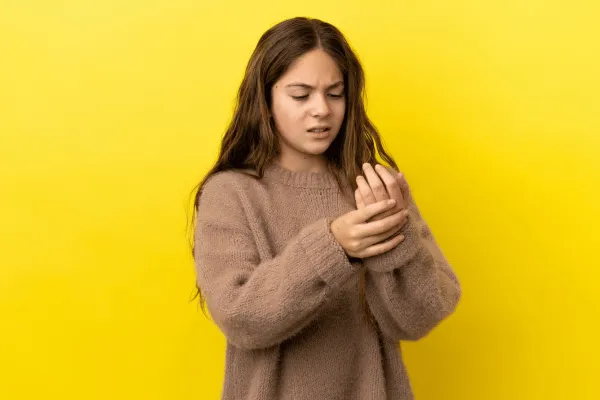Support and Learning Resources for Young Arthritis Patients
Close to 300,000 young individuals in the U.S. are affected by juvenile idiopathic arthritis (JIA) and related pediatric rheumatic conditions. These autoimmune disorders can impact joints, skin, eyes, and even internal organs. While receiving such a diagnosis might feel overwhelming, it's comforting to know that there are effective treatments to help manage the condition.
Juvenile arthritis encompasses a range of rheumatic conditions that affect children 16 years and younger. It's important to note that these aren't simply adult diseases appearing in kids; they have unique characteristics and require different treatment approaches. Among these conditions, juvenile idiopathic arthritis (formerly known as juvenile rheumatoid arthritis) is the most prevalent. Other examples include juvenile psoriatic arthritis, pediatric lupus, and several more.

Guiding Your Child Through Understanding Juvenile Arthritis
Helping Your Child Navigate the World of Juvenile Arthritis with Compassion and Knowledge.
Understanding the Condition:
Typically, a pediatric rheumatologist will discuss the condition with your child. Dr. Karen Onel, a leading expert in pediatric rheumatology from the Hospital for Special Surgery in New York, engages both parents and children during the diagnosis. She simplifies explanations and occasionally uses joint models to clarify the situation.
Dr. Onel often says, "When we mention 'arthritis,' we're referring to a joint that's swollen, warm, painful, and not functioning as it once did." She highlights that while many might associate arthritis with older family members, like a grandma needing a hip replacement, Juvenile Idiopathic Arthritis (JIA) is distinct. Dr. Onel describes it as our body's excellent defense system sometimes mistakenly targeting its components. "If this happens to someone under 16 for more than six weeks, we call it JIA," she adds.
Dr. Kelly Rouster-Stevens from Emory University School of Medicine also emphasizes the immune system's role. She explains to children, "The immune system is designed to combat infections. However, at times, it mistakenly targets and harms the joints even in the absence of an infection." In simpler terms, the immune system's job is to protect against "bad guys," like harmful germs, but occasionally it misdirects its actions toward the joints.
Understanding the Origins of JIA:
The exact cause of JIA remains a mystery, with "idiopathic" literally translating to "unknown." However, experts believe it's likely a mix of genetic and external influences. As described in the Arthritis Foundation's guide, “Your Journey With Champ: Learning About Juvenile Arthritis,” it's hypothesized that JIA might result from the way our genes react to external triggers, perhaps a bacteria or virus. To put it simply, imagine a science experiment where two distinct elements combine to produce a unique reaction. In this scenario, that reaction is arthritis.
Understanding the "Why":
The question "Why did this happen to me?" is one that resonates with people of all ages. As Rosalind Dorlen, Ph.D., a clinical psychologist with expertise in chronic illness-related psychological issues, points out, often there isn't a straightforward answer. Some might attribute it to familial trends or genetics. However, Dr. Dorlen emphasizes that children should be reassured that the onset of the disease isn't their fault and they played no part in causing it. It's essential for them to feel supported, understanding that they're not battling JIA alone but as a united front with their loved ones.
She encourages affirming to kids, “The reason behind the disease might be uncertain, but what's clear is that I'm always here for you.” This unwavering support extends to moments of sadness, frustration, or when they question the fairness of their situation.
Discussing treatment is vital too. As Dr. Dorlen advises, parents should communicate the benefits of treatment clearly, ensuring the child knows it's for their well-being, even if it seems challenging initially. Dr. Rouster-Stevens simplifies this by telling children that treatments aim to reduce inflammation, preventing their immune system from harming their joints.
Navigating Challenges:
Understanding and accepting a JIA diagnosis isn't always straightforward, even with the best explanations and reassurances. If you feel your child is struggling to come to terms with their condition, Dr. Dorlen suggests seeking guidance from a psychologist or another mental health expert. They can offer valuable support during these difficult moments.
Have a question?
We're Here to Help
By providing my phone number, I agree to receive text messages from the business.


